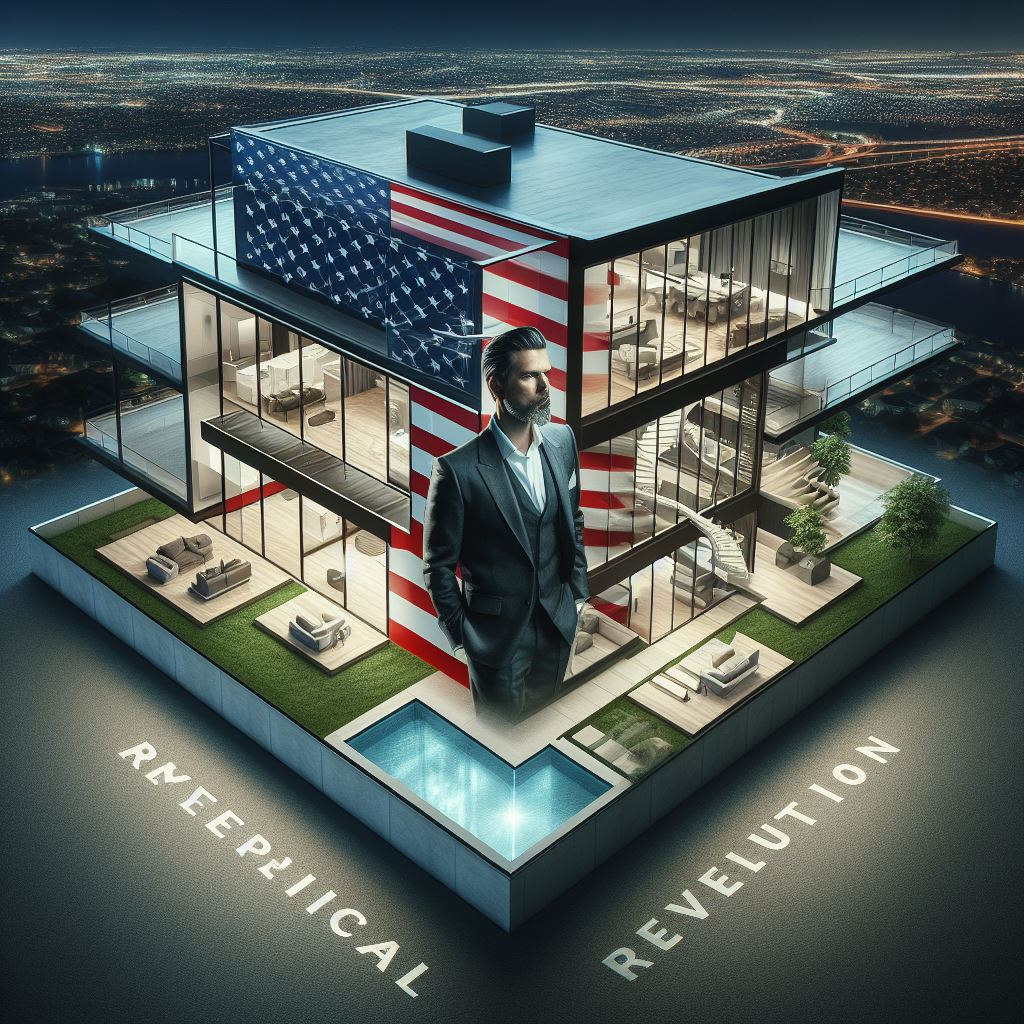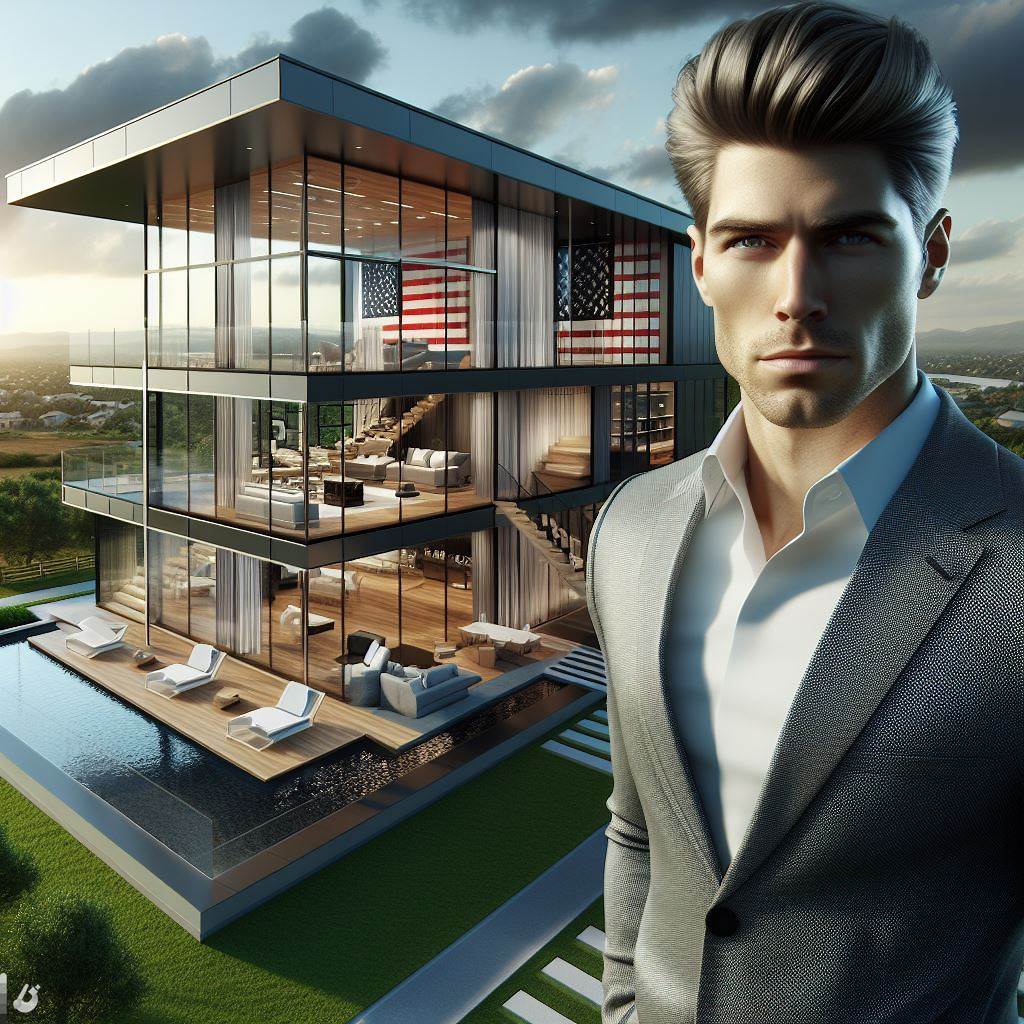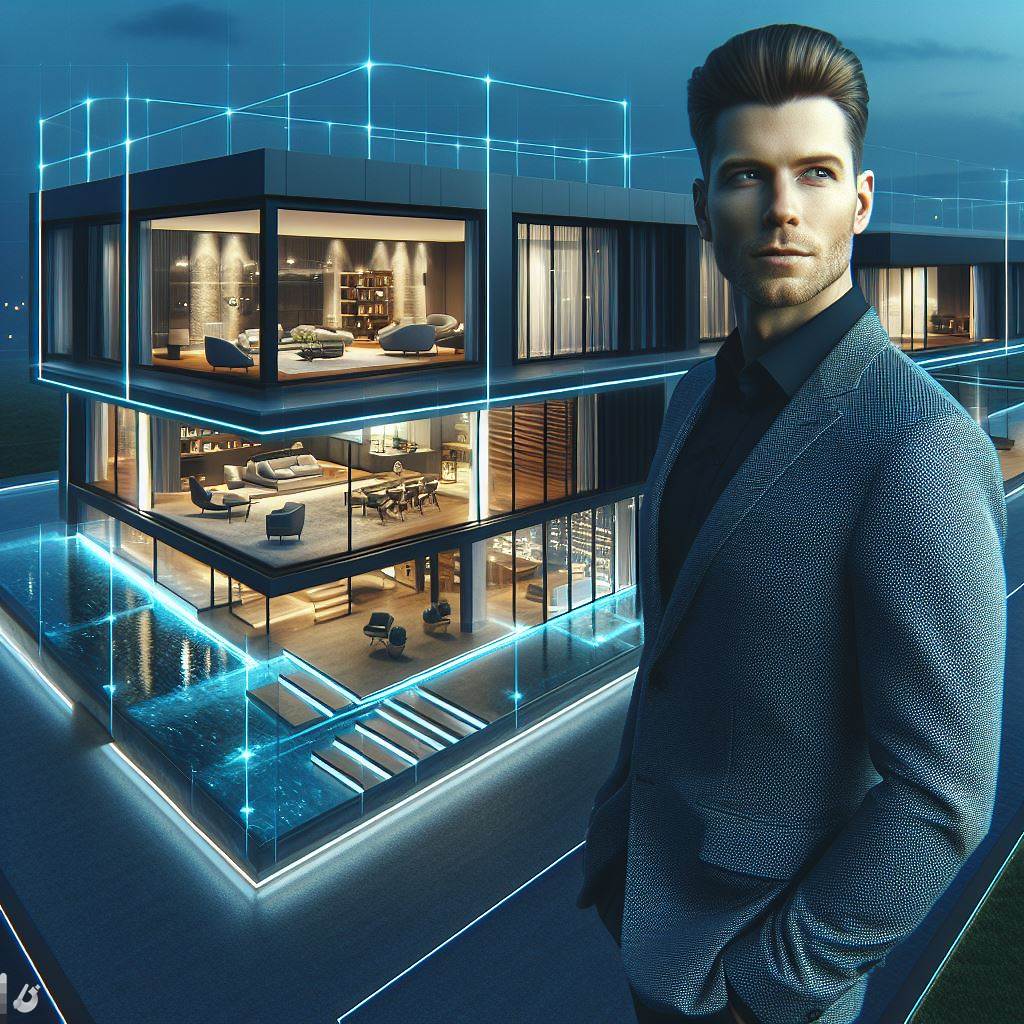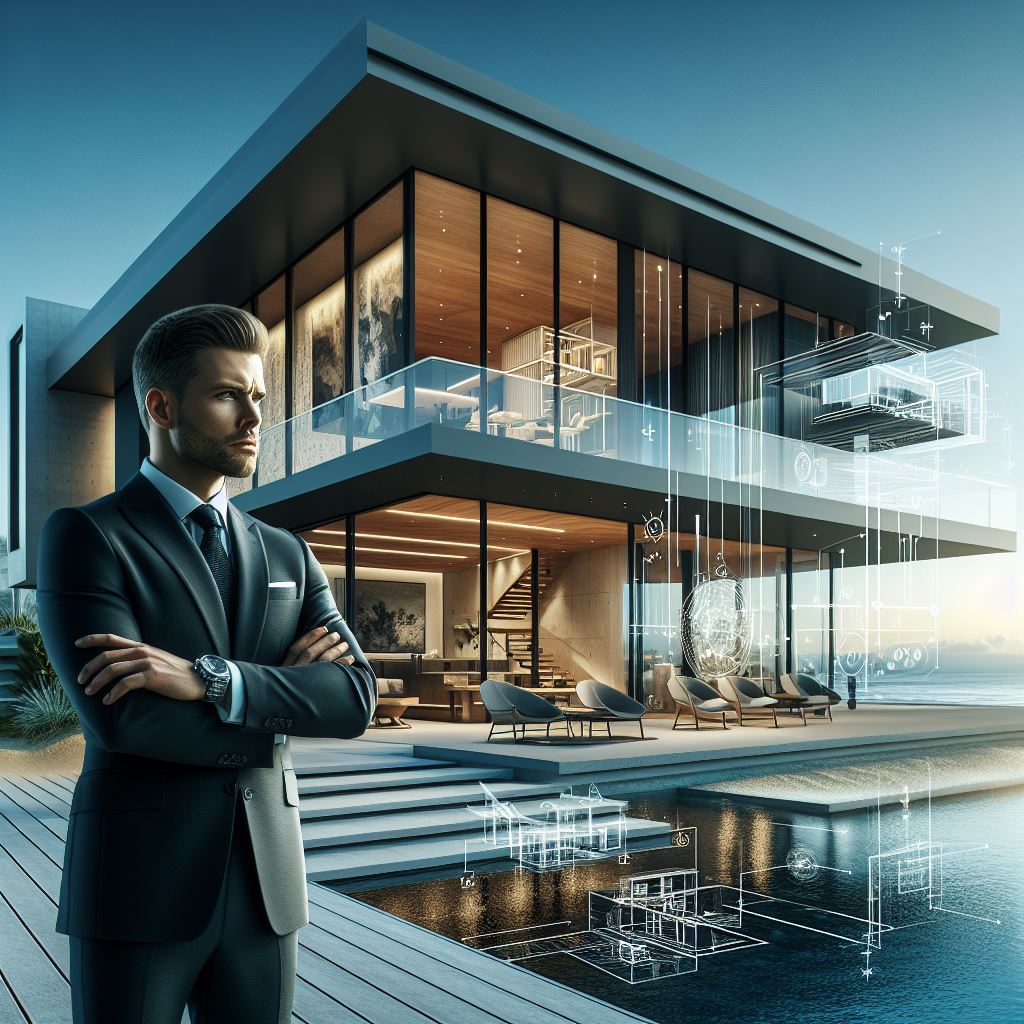Introduction
Glass houses in the luxury real estate market have gained popularity, offering a unique living experience.
Glass houses have become an intriguing trend within the luxury real estate market.
These exquisite properties have gained significant popularity, captivating the imagination of potential buyers.
The concept of transparent luxury houses is nothing short of extraordinary.
These architectural wonders provide residents with an entirely new living experience.
The infusion of glass into the design opens up a world of possibilities, allowing natural light to flood the interiors and forging a seamless connection with the surroundings.
Living in a glass house offers an unparalleled sense of transparency and openness.
The uninterrupted views of the lush landscapes or sparkling cityscapes create a harmonious blend between the interior and exterior environments.
It allows residents to be constantly immersed in the beauty of nature or the vibrant energy of urban life.
Additionally, glass houses boast an unprecedented feeling of spaciousness.
The abundance of natural light brings a serene and uplifting atmosphere, enhancing the overall well-being of occupants.
The seamless integration of crystal-clear walls into the architecture blurs the line between indoor and outdoor living, epitomizing the concept of modern luxury.
Moreover, transparent luxury houses are an architectural marvel.
The use of high-quality materials and innovative construction techniques ensures stability and safety, despite the extensive use of glass.
Combining functionality with aesthetic appeal, these houses offer a breathtaking spectacle for those fortunate enough to call them home.
In essence, the growing popularity of glass houses in the luxury real estate market is a testament to their unique allure.
These transparent wonders offer an unparalleled living experience, harmonizing nature and architecture while providing a haven of serenity and opulence.
Advantages of Glass Houses
Abundance of natural light
Glass houses provide an unparalleled opportunity to bask in an abundance of natural light.
The transparent walls allow sunlight to flow in, creating a bright and uplifting environment.
Panoramic views and connection with nature
One of the greatest advantages of living in a glass house is the stunning panoramic views it offers.
With floor-to-ceiling windows, residents can immerse themselves in the beauty of their surroundings, connecting with nature on a whole new level.
Sense of openness and spaciousness
Glass structures have the remarkable ability to create a sense of openness and spaciousness.
The transparent walls eliminate boundaries, making the interior feel larger, and enhancing the overall living experience.
Integration of interior and exterior
Glass houses seamlessly blend the boundaries between the interior and exterior spaces.
With unobstructed views, residents can enjoy the feeling of being in the middle of nature while still being comfortably inside their homes.
Improved well-being
The abundant natural light that glass houses provide has numerous benefits for human well-being.
Sunlight is known to enhance mood, boost vitamin D levels, and improve overall health, promoting a more vibrant and contented lifestyle.
Energy efficiency
Contrary to popular belief, glass houses can be energy-efficient.
Modern advancements in glass technology have led to the development of energy-saving glass, which helps regulate temperature, minimize heat loss, and reduce reliance on artificial lighting.
Integration with modern design
Glass houses are synonymous with modern architectural design.
The sleek and minimalist appearance that glass structures offer can be aesthetically pleasing and complement any contemporary decor, creating a harmonious and stylish living space.
Customizability and versatility
Glass houses offer a high degree of customizability and versatility.
As glass is a flexible material, it can be shaped and molded in various ways, allowing for unique designs and personalized touches to fit individual preferences.
Environmental benefits
Apart from energy efficiency, glass houses have other environmental benefits.
The use of glass reduces the need for artificial lighting during the day, thereby saving energy and reducing carbon footprint.
Additionally, glass is also recyclable, making it an eco-friendly choice.
Inspiring creativity
Living in a glass house can inspire creativity and artistic expression.
The constant connection with nature, the play of light, and the ever-changing views can stimulate the imagination and lead to a more inspired and creative lifestyle.
Spectacular entertaining space
Glass houses make for spectacular entertaining spaces.
The seamless flow between indoor and outdoor areas provides an ideal setting for hosting gatherings and events, allowing guests to enjoy breathtaking views and a unique ambiance.
Increased property value
Glass houses are considered luxurious and unique, which can significantly increase the property value.
The allure of living in a transparent oasis with panoramic views is highly coveted and desirable in the real estate market.
In essence, glass houses offer an array of advantages, from the abundance of natural light and panoramic views to the sense of openness and spaciousness they create.
With the integration of interior and exterior spaces, modern design, energy efficiency, and environmental benefits, living in a glass house provides a truly luxurious and captivating lifestyle experience.
Read: Luxury Living: The Rise of Vertical Gardens
Architectural Design
Different architectural designs commonly used in glass houses
Glass houses have become increasingly popular in modern architecture due to their unique design and aesthetic appeal.
These stunning structures make use of innovative architectural designs that showcase the beauty of transparency and the seamless integration of modern elements.
Let’s explore some of the architectural designs commonly used in glass houses:
- Passive Solar Design: Glass houses are often designed to maximize solar gain.
Large windows and glass walls allow for maximum exposure to sunlight, reducing the need for artificial lighting during the day. - Open Floor Plans: Glass houses are known for their open and spacious layouts.
The absence of solid walls and the use of transparent glass walls create a seamless transition between interior and exterior spaces, providing a sense of freedom and openness. - Minimalist Approach: Many glass houses follow a minimalist design philosophy, focusing on simplicity and clean lines.
The use of glass as the primary building material allows for a sleek and minimal look, with emphasis on the surrounding environment and natural light. - Bioclimatic Architecture: Glass houses incorporate bioclimatic principles, combining technology and design to create a comfortable and sustainable living environment.
Natural ventilation systems, thermal insulation, and solar shading devices contribute to energy efficiency and reduce the carbon footprint.
The use of sustainable materials and energy-efficient technologies
In addition to architectural design, glass houses also emphasize the use of sustainable materials and energy-efficient technologies.
Let’s delve into their significance:
Sustainable Materials
Glass houses often make use of eco-friendly materials such as recycled glass, low-emissivity glass, and sustainable timber.
These materials not only reduce the environmental impact but also contribute to the overall aesthetics of the structure.
Energy-Efficient Technologies
Glass houses employ various energy-efficient technologies to reduce energy consumption.
Smart home automation systems control lighting, heating, and cooling, optimizing energy usage.
Solar panels and geothermal systems are also integrated to generate clean energy and further minimize reliance on fossil fuels.
Integration of modern design elements in glass houses
Now, let’s highlight the integration of modern design elements in glass houses:
- Smart Home Integration: Glass houses incorporate state-of-the-art technology, turning them into smart homes.
From voice-controlled lighting systems to automated climate control, these modern design elements enhance convenience and comfort. - Indoor-Outdoor Connection: Glass houses blur the boundaries between indoor and outdoor spaces through the clever use of sliding or folding glass walls.
This integration allows residents to enjoy the beauty of nature while being protected from the elements. - Customized Features: Glass houses often feature customizable design elements, allowing owners to personalize their living spaces.
From interior finishes to furniture, every aspect can be tailored to reflect individual tastes and preferences.
In fact, glass houses exemplify the integration of innovative architectural designs, sustainable materials, and energy-efficient technologies.
With their open layouts, minimalistic approach, and emphasis on the surrounding environment, these transparent luxury houses offer a unique living experience.
Whether it’s the breathtaking views or the seamless connection between indoor and outdoor spaces, glass houses continue to capture the imagination of design enthusiasts worldwide.
Read: Opulent Overwater Bungalows Around the World

Privacy Concerns
Addressing Privacy Concerns
In the mesmerizing world of transparent luxury houses, privacy emerges as a paramount concern.
Striking the delicate balance between opulence and seclusion necessitates proactive measures.
Architects and designers delve into creating intimate spaces within the transparency, ensuring that residents feel secure and shielded from prying eyes.
This involves thoughtful spatial planning, strategically placing private areas away from transparent facades.
The integration of smart technologies, such as electronically controlled curtains or privacy glass that can be instantly activated, becomes an integral part of the design.
The goal is to empower homeowners with the ability to curate their privacy levels while indulging in the breathtaking openness of their glass dwellings.
Tinted Glass and Techniques
The advent of tinted glass revolutionizes the narrative of transparency.
No longer confined to clear panes, homeowners can embrace the luxury of tinted glass that provides an elegant solution to privacy concerns.
Advanced glass technology allows for customization, enabling residents to adjust the opacity of the glass at their discretion.
Tinted glass not only serves as a visual barrier but also contributes to energy efficiency by reducing glare and heat.
This dual functionality transforms it into a design element that enhances both privacy and the overall comfort of the living space.
Homeowners can revel in the panoramic views without compromising on the serenity of their private domains.
Landscaping and Architectural Features
Nature becomes a dynamic ally in the pursuit of privacy within transparent luxury houses.
Landscaping takes on a strategic role, with lush greenery acting as a living barrier.
Designers meticulously plan the placement of trees, shrubs, and other flora to create natural screens that offer seclusion without obstructing the aesthetic appeal of the glass structure.
Simultaneously, architects leverage innovative design elements to enhance privacy.
Textured glass, frosted surfaces, or unique architectural features strategically placed along transparent walls provide an additional layer of discretion.
These design interventions transform the glass wonder homes into harmonious sanctuaries where residents can bask in both luxury and intimacy.
In short, the addressing of privacy concerns in transparent luxury houses is a multidimensional endeavor.
From thoughtful spatial planning and smart technologies to the transformative power of tinted glass and the embrace of nature through landscaping, every aspect is meticulously curated to ensure that these glass wonders stand as symbols of opulence and sanctuary.
Read: Smart Gardens: Tech in Elite Outdoor Spaces
Luxury Amenities
When it comes to glass houses, luxury amenities are a key feature that adds to the allure and appeal of these transparent wonders.
From smart home technologies to private pools and spas, these houses are designed to provide the ultimate luxurious living experience.
Smart Home Technologies
State-of-the-art smart home technologies are a common feature in glass house designs.
Home automation systems allow residents to control various aspects of their homes with ease.
From climate control to lighting, these technologies provide convenience and comfort at the touch of a button.
Smart security systems offer advanced surveillance and ensure the safety and privacy of residents.
Integrated audio and video systems provide an immersive entertainment experience throughout the house.
Private Pools and Spas
Many glass houses boast the luxury of private pools and spas, designed for relaxation and rejuvenation.
These pools often feature innovative designs and offer stunning views of the surroundings.
Indoor or outdoor, these aquatic marvels provide a refreshing escape from the hustle and bustle of everyday life.
High-end spas complete with jacuzzis, saunas, and steam rooms offer the ultimate pampering experience.
Entertainment Areas
Glass houses are known for their entertainment areas, perfect for hosting gatherings and parties.
Indoor entertainment spaces equipped with home theaters and gaming zones provide endless entertainment options.
Outdoor entertainment areas, such as spacious decks and patios, are ideal for enjoying the scenic beauty and socializing.
Some glass houses even feature rooftop terraces with panoramic views, creating an unforgettable party venue.
Outdoor Living Spaces
Embracing the surrounding nature, glass houses often include expansive outdoor living spaces.
Lush gardens, landscaped lawns, and carefully curated green spaces provide a serene and peaceful ambiance.
Outdoor kitchens and dining areas allow residents to enjoy al fresco meals while taking in the beautiful surroundings.
Fire pits, water features, and outdoor fireplaces add a touch of luxury and create a cozy atmosphere.
With the integration of comfortable seating and lounging areas, outdoor living spaces become extensions of the house itself.
In general, luxury amenities play a significant role in glass house designs.
Smart home technologies offer convenience and control, private pools and spas provide relaxation, entertainment areas cater to social gatherings, and outdoor living spaces embrace the natural beauty.
With these amenities, living in a glass house becomes an extraordinary and luxurious experience.
Read: Smart Homes: The Peak of Luxurious Living
Environmental Impact
Glass houses are not only visually stunning but also have a considerable environmental impact.
The use of glass in construction has both positive and negative effects on the environment.
Let’s delve into this fascinating topic further.
Energy Efficiency
One of the major concerns when it comes to glass houses is energy consumption.
Glass is a poor insulator, meaning it easily transfers heat.
Consequently, these houses can struggle to maintain comfortable temperatures, especially in extreme climates.
To combat this issue, many glass houses now incorporate energy-efficient systems for heating and cooling.
Double or triple glazing, low-emissivity coatings, and insulated frames help to reduce energy consumption by enhancing thermal insulation.
These systems prevent heat loss during winter and curb heat gain in the summer, resulting in lower energy bills and a reduced carbon footprint.
Sustainable Designs
With the growing emphasis on sustainability, glass houses have become part of the trend towards eco-friendly designs.
Architects and designers are now integrating various sustainable features into these houses, making them more environmentally friendly.
For instance, incorporating green roofs or vertical gardens can provide natural insulation, reduce stormwater runoff, and enhance biodiversity.
Rainwater harvesting systems and graywater recycling can be employed to minimize water wastage, while the use of solar panels for energy generation can significantly reduce dependence on fossil fuels.
Natural Ventilation
Proper ventilation is essential in any house, including glass houses.
To maintain a comfortable indoor environment, designers are increasingly incorporating natural ventilation systems into these structures.
Strategically placed windows and vents allow for efficient airflow, reducing the need for mechanical ventilation.
This not only reduces energy consumption but also improves indoor air quality, promoting the well-being of the occupants.
By maximizing the use of natural resources, glass houses can create a harmonious connection between the indoors and outdoors.
Sustainable Materials
In addition to sustainable designs, using eco-friendly materials in the construction of glass houses is crucial.
Nowadays, there is a broad range of sustainable materials available for use, such as recycled glass, low VOC (volatile organic compound) paints, and sustainably sourced timber.
Opting for these materials helps reduce the carbon footprint associated with construction and minimize waste.
It also promotes the use of renewable resources, contributing towards a more sustainable future.
Environmental Challenges
Despite the efforts to make glass houses more eco-friendly, there are still significant environmental challenges associated with their construction and maintenance.
The production of glass itself requires considerable energy and resources, and the extraction of raw materials can have negative ecological impacts.
Additionally, glass houses may face challenges with privacy and glare, which can lead to increased use of artificial lighting and blinds.
Finding a balance between the beauty and functionality of glass houses while minimizing their environmental impact remains an ongoing challenge.
In review, glass houses have a significant environmental impact, necessitating innovative solutions for energy efficiency, sustainable material use, and eco-friendly designs.
With the incorporation of energy-efficient systems, sustainable materials, and a focus on natural ventilation, glass houses can strive towards reducing their environmental footprint.
As the trend towards eco-friendly designs continues, these transparent luxury houses will evolve to be more environmentally sustainable, harmonizing with nature while providing a visually stunning living space.
Conclusion
The appeal of transparent luxury houses lies in their ability to seamlessly blend indoor and outdoor living.
The growing trend and demand for glass houses in the real estate market further highlight the desire for a modern and luxurious lifestyle.
With advancements in technology allowing for stronger and more energy-efficient glass, the future of glass house designs in luxury living looks promising.
The transparency and elegance of these houses create a unique and sought-after living experience, making them a symbol of sophistication and luxury.
As more architects and designers explore innovative ways to incorporate glass into their projects, we can expect to see even more stunning and awe-inspiring glass wonders in the future.
The timeless beauty and allure of transparent luxury houses continue to captivate homeowners and will undoubtedly remain a sought-after feature in the realm of modern architectural design.




